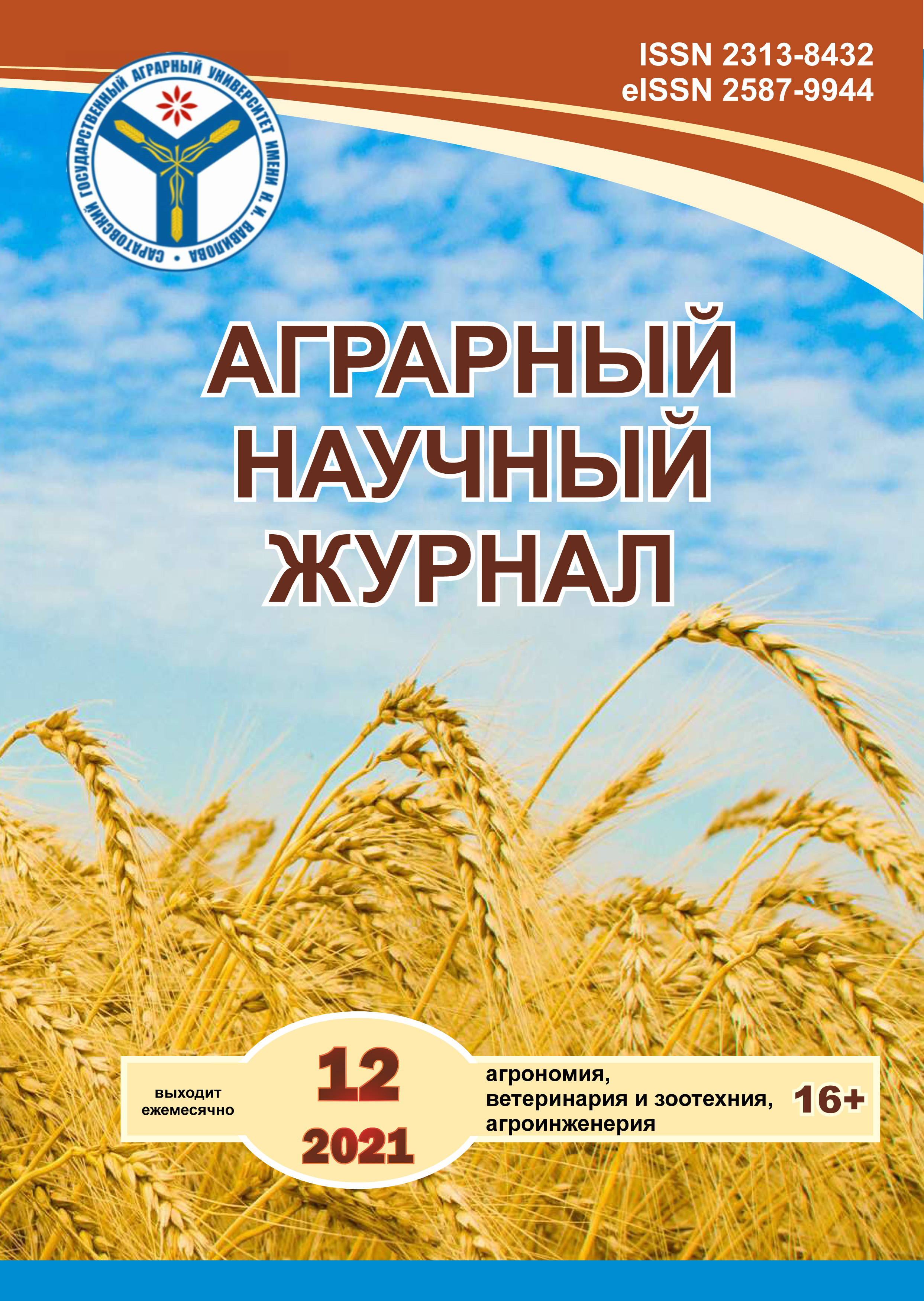The influence of agrochemicals on the yield and quality of soybean when growing using No-till technology
DOI:
https://doi.org/10.28983/asj.y2021i12pp50-54Keywords:
soy, ammonium nitrate, ammophos, diammophos, fungicidal disinfectant, inoculant, no-tillAbstract
The article presents the results of field experiments carried out in 2018-2020 on the fields of EkoNivaAgro LLC at the Levoberezhnoye farm (Liskinsky district, Voronezh region). The objects of the study were the Canadian soybean variety OAK Prudence, the Argentinean inoculant of the liquid formulation Nitragin Zh, the fungicidal dressing agent Delit Pro, KS, pyraclostrobin 200 g / l (BASF, Germany). Soybeans were grown using the NO-TILL technology after the predecessor corn for grain. The yield of soybean grain in the control variant (without the use of agrochemicals) was the highest in 2018, favorable for moisture (1.50 t / ha) and practically the same in 2019 and 2020. - 1.24 and 1.23 t / ha, respectively. On average for 2018–2020 the yield of soybean grain in the control variant was 1.32 t / ha. The maximum grain yield was obtained on the variant with the combined use of the inoculant Nitragin Zh and ammonium nitrate at a dose of 200 kg / ha - 2.08 t / ha. The increase in comparison with the control variant reached 0.76 t / ha, or 57.0%. The greatest influence on the technological parameters of soybean seeds was exerted by pre-sowing inoculation of seeds and pre-sowing application of nitrogen fertilizers at a dose of N70. Inoculation provided an increase in the protein content in soybean seeds by 4.1%, and the introduction of N70 by 4.3% in absolute terms compared to the control.
Downloads
References
Инновационные технологии возделывания масличных культур. Краснодар: Просвещение-Юг, 2017. 256 с.
Качество семян сои в зависимости от гербицидов, применяемых при различной густоте стояния растений / Ф. Б. Омаров [и др.] // Бюллетень науки и практики. 2019. № 2. С. 152–158.
Квасов А. Ю. Руководитель департамента аграрной политики Воронежской области Соя и люпин в Воронежской области. Режим доступа: http://www.infotechno.ru/ros-soya2018/dok_kvasov2018.php
Кривошлыков К. М., Трунова М. В., Лукомец А. В. Объективные предпосылки для усиления роли государства в развитии селекции и семеноводства масличных культур в России // Масличные культуры. 2019. Вып. 3 (179). С. 79–84.
Муравьев А. А., Демидова А. Г Урожай и качество семян сортов сои в лесостепи ЦЧР на разноудобренных фонах // Земледелие. 2018. № 3. С. 22–25.
Оценка влияния инокуляции семян на урожайность сои в Орловской области / Е. В. Кирсанова [и др.] // Вестник аграрной науки. 2017. № 4. С. 62–68.
Соя в растущем тренде. Новое исследование Клеффман Групп // Защита растений. 2019. № 12 (289). Режим доступа:https://www.agroxxi.ru/gazeta-zaschita-rastenii/num455.html#literal87061
Соя в России – действительность и возможность / В. М. Лукомец [и др.]. Краснодар, 2013. 99 с.
Тишков Н. М., Махонин В. Л., Носов В. В. Урожайность и качество урожая сои в зависимости от способов и доз применения удобрений // Масличные культуры. 2019. № 4(180). С. 53–60.
Ширяева Н. А., Береговая Ю. В., Петрова С. Н. Эффективность применения комплексных минеральных удобрений в агроценозе сои // Вестник аграрной науки. 2020. № 5(86). С. 66–72.
Шовкова О. В. Содержание протеина и масла в зерне сои в зависимости от сроков посева и использования микроудобрений // Вестник Белорусской государственной сельскохозяйственной академии. 2020. № 2. С. 62–65.
Эффективность выращивания сои с применением удобрений и биопрепарата на черноземе обыкновенном в условиях орошения / О. Г. Шабалдас [и др.] // Аграрный научный журнал. 2020. № 8. С. 48–54.
Downloads
Published
Issue
Section
License
Copyright (c) 2021 The Agrarian Scientific Journal

This work is licensed under a Creative Commons Attribution-NonCommercial 4.0 International License.








